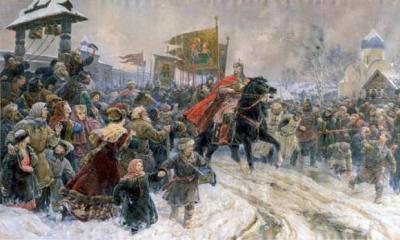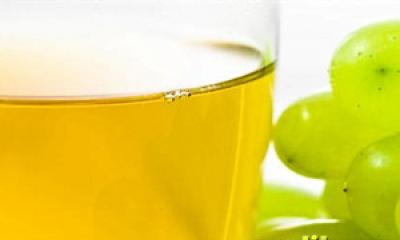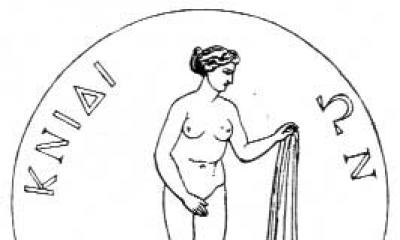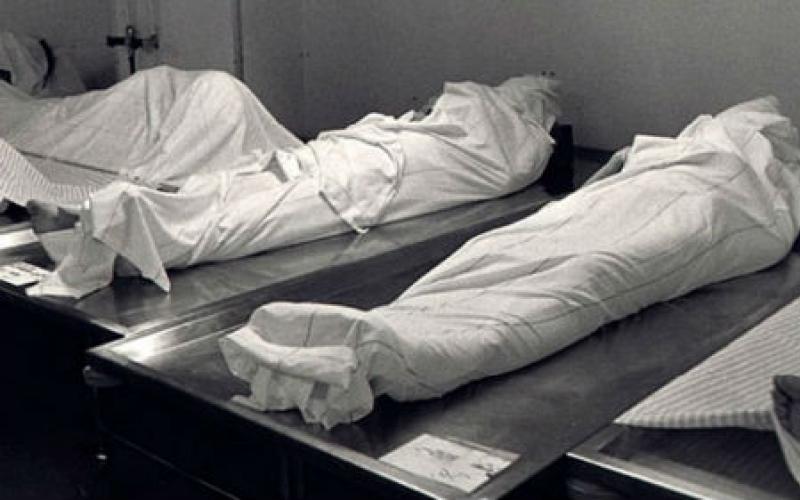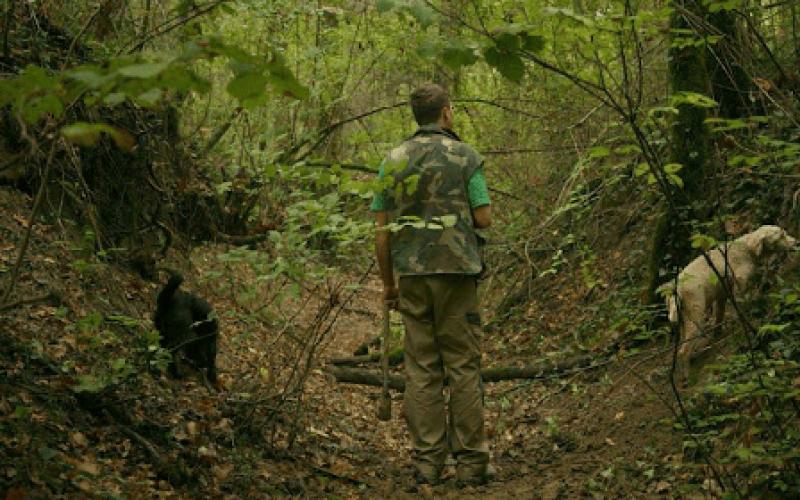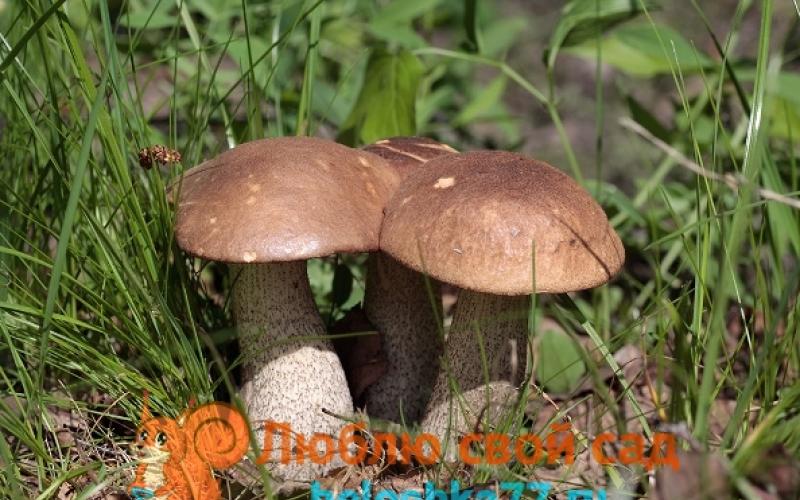Previously, he was on the banks of the Volga; from 1700 - away from it, due to a change in the course of the river. Founded in 1164 led. book. Georgy Vsevolodovich at the place consecrated by the stay of the Feodorovskaya Icon of the Mother of God, which since ancient times was located not far from Gorodets in the chapel where the Gorodetsky Monastery was built. 
General view of the Fedorovsky Monastery. 1894 Gorodets, Nizhny Novgorod province
Monastery Church in the name of the Feodorovskaya Icon of the Mother of God - an ancient structure; upon renewal, it was consecrated in 1767 in the presence of imp. Catherine II, who visited the monastery during her journey along the Volga.
Here was the miraculous Feodorovskaya Icon of the Mother of God, famous in 1830 for the deliverance of Balakhna from cholera - a list from the above-mentioned ancient Feodorovskaya icon, which was in the monastery, and after its destruction by the Tatars, appeared in 1239 on the site where the Zaprudnensky Savior Monastery was founded (in Kostroma). 

In the monastery followed the death of led. book. Alexander Nevsky, returning from the Horde; the temple in the monastery in his name, according to legend, was built on the site of the cell where he died. 

The history of the Feodorovsky Monastery knows many significant events, on May 19, 1737, Empress Catherine II visited it, who was present at the consecration of the temple in the name of the Mother of God Theodora and granted a significant amount of money to restore the destroyed buildings of the monastery.
During the years of Soviet power, the temples of the monastery were lost.
On September 12, 2009, the Feodorovsky Monastery was revived on the Gorodetsky land. 
Icon of the Mother of God MIRACULOUS FEODOROVSKAYA 
THE MIRACULOUS FEODOROVSKAYA ICON OF THE HOLY MOTHER OF GOD has been known since the 12th century. She was in a chapel near the ancient Volga town of Gorodets. Where the monastery was founded, called the Theotokos-Feodorovsky. The miraculous image was the main shrine. In 1239, during the invasion of the Mongol-Tatar invaders, the icon disappeared from the city. In the same year, the Feodorovskaya Icon of the Mother of God became the prayer image of the Holy Blessed Prince Alexander Nevsky, and it was with this icon that in 1239 Grand Duke Yaroslav Vsevolodovich blessed his son, Holy Prince Alexander, to marry Princess Paraskeva of Polotsk. In the late 50s and early 60s of the 13th century, young. brother of Alexander Nevsky, a miracle-working image appeared. On the eve of the apparition, many residents of Kostroma saw a warrior with an icon of the Mother of God in his arms. In the Warrior, many recognized Theodore Stratilates. This event took place on the day of the Dormition of the Most Holy Theotokos. On the trail. day Prince Vasily Yaroslavovich during the hunt saw this icon on the branches of a tree, near the river Zaprudnya. THE FOUND SHINE WAS BROUGHT TO KOSTROMA BY THE PASSIONAL PROCESSION. and placed in the cathedral church in the name of THE GREAT MARTYR THEODOR STRATILATES, after which it became known as FEODOROVSKAYA
March 14 old style. 1613 in the Kostroma HOLY TRINITY IPATIEVSKY monastery, MIKHAIL FYODOROVICH ROMANOV, in front of the miraculous FEODOROVSKAYA icon, accepted His election by the Zemsky Cathedral to the Throne of the Russian State. FROM THIS TIME, THE FEODOROVSKIY IMAGE OF THE MOTHER OF GOD BECAME A PARTICULARSLY HONORED HOUSE OF THE ROYAL HOUSE OF ROMANOVS. And in memory of the events of 1613, a church holiday of this image was established on March 14 Holy Mother of God.
At present, the Miraculous Feodorovskaya Icon of the Mother of God is kept as a great shrine in the Epiphany-Anastasinsky cathedral Kostroma.
THE MIRACULOUS FEODOROVSKAYA ICON OF THE MOTHER OF GOD HAS BEEN REPRESENTED BY THE ORTHODOX FROM ANCIENT TIMES AS PATRONIZING FAMILY WELL-BEING, THE BIRTH AND EDUCATION OF CHILDREN, HELPING WITH DIFFICULT BIRTH. This miraculous help from the icon of the Most Holy Theotokos, the celebration of which was established on the day of the beginning of the service of the House of Romanov to God and the Russian People, testifies that the House of ROMANOV continues to be the Reigning House in the eyes of God. And the church holiday of the FEODOROVSKAYA ICON OF THE MOTHER OF GOD on the day of the intercession of the Romanov Family on royal service testifies that the Russian Orthodox Church remains faithful to the Cathedral Vow of 1613, despite the fact that the priesthood of the Russian Orthodox Church practically nowhere does he offer prayers either for the coming victorious Tsar from the Royal House of Romanov (on the female line), or for the deceased Tsars and Queens, including those from the Royal House of Romanov.

Born January 14, 1945 in Moscow, baptized in infancy. Father, Anisimov Ivan Ilyich, belonged to a priestly family, originating from the Oryol province.
After graduating from high school, he served in the Armed Forces.
In 1977 he graduated from the Moscow All-Union Institute of Law with a degree in jurisprudence. He worked as a consultant in Inyurkollegiya, an instructor in the Moscow Regional Committee of the Trade Union of Education Workers, Higher Education and Scientific Institutions; art inspector at the Art Fund of the RSFSR; Deputy Head of the Mechanization Department of the Mostransstroy Trust. Was married.
In 1987, he was admitted to the service of the housekeeper of the Holy Trinity Sergius Lavra, took part in the preparations for the celebration of the 1000th anniversary of the Baptism of Russia.
In 1990, in the city of Ivanovo, he was ordained deacon (May 22) and presbyter (August 2) by Archbishop Ambrose of Ivanovo-Voznesensk and Kineshma.
From April 1993 to May 2007 he served at the Transfiguration Cathedral in Ivanovo. He taught dogmatic theology, church law, basic theology, apologetics and missiology at the Ivanovo-Voznesensk Theological Seminary, as well as basic theology at the Ivanovo Orthodox Theological Institute.
On September 5, 1993, Archbishop Ambrose of Ivanovo-Voznesensk was tonsured a monk with the name Augustine in honor of Blessed Augustine, ep. Hipponic.
In 1995 he was elevated to the rank of hegumen.
In 2001 he graduated from the Moscow Theological Seminary.
He was engaged in missionary activity in the Ivanovo-Voznesensk diocese and beyond. In his activities, he focused on the revival of the Orthodox way of life through the communal life of parishes and collectives. At the competition of missionary projects within the framework of the XV Christmas Educational Readings, the Synodal Missionary Department awarded a diploma to the program "Orthodox community as a mission to introduce the Orthodox way of life in Russia."
In 1995-2002 taught the subject "Missiology" at the Courses of Catechists of the Brotherhood of Alexander Nevsky in Nizhny Novgorod. In 1995, at the invitation of the government and the Lutheran Church of Lower Saxony (Germany), he was on an official business trip to Hannover in order to study the education system and the interaction between the Church and the state in social sphere. In 1996, he spoke in the State Duma of the Russian Federation at parliamentary hearings on the topic "Education and the national security of Russia." In 2001, at the request of the mayor of Ivanovo, he gave a course of lectures “The Orthodox way of life. Fundamentals of Orthodoxy” for the Ivanovo city administration. He taught at the Ivanovo State University, in particular, he taught the author's course "Phenomenology of Religion" at the Faculty of History. In 2007-2008 taught at the Ivanovo Institute for the Advanced Training of Teachers to prepare them for the course "Fundamentals of Orthodox Culture". For 8 years he was the chairman of the organizing committee for holding the holidays "Christmas Gift" and "Bright Holiday", the purpose of which was to attract young students of music and art schools and colleges, secondary schools to Orthodox values. He took part in the VI Golden Knight Film Festival as a member of the jury.
In 2002, with the blessing of His Holiness Patriarch Alexy II, he was included in the working group of the Socio-Political Expert Council for the development of the Educational Concept of the Russian Orthodox Church.
In May 2006, at the invitation of the Directorate of the Russian Center for Science and Culture in Warsaw, he participated in the opening ceremony of the Year of Russian Culture in Poland in Lodz.
In 2007, he became a member of the commission for the canonization of the Ivanovo-Voznesensk diocese. In 2008, at the invitation of the Chairman of the Synodal Missionary Department, Archbishop John of Belgorod and Stary Oskol, he participated in a working seminar on the development of the concept study guide and methodology of teaching the subject "Missiology".
By decree of Bishop of Ivanovo-Voznesensky and Kineshma Joseph of October 15, 2008, he was enlisted for the state with the right to transfer to the Nizhny Novgorod diocese. In December 2008, he was appointed builder of the restored Feodorovsky Monastery.
By the decision of the Holy Synod of May 27, 2009 (magazine No. 45) he was appointed vicegerent of the Feodorovsky Monastery in the city of Gorodets, Nizhny Novgorod Region.
He was the confessor of the St. Elizabethan Department of the Sisters of Mercy of the Nizhny Novgorod Medical College; spiritual advisor, lecturer-consultant of the Department of International Political Communications of the Faculty of International Relations of the Nizhny Novgorod state university them. Lobachevsky.Full member of the Imperial Orthodox Palestinian Society.
For the Russian Orthodox Church, 2011 was marked by the beginning of the reform of the diocesan structure. As part of its program, there was a disaggregation of the former and the creation of new dioceses, including in the Gorodets and Nizhny Novgorod regions, uniting a number of parishes in the adjacent administrative boundaries.
Historical information about the city
Gorodets of the Nizhny Novgorod region is the oldest city on the Volga coast. The mention of him in the annals dates back to 1172. It arose as a fortress to protect the Vladimir-Suzdal principality from the invasion of foreigners and for a long time was an important stronghold for its defense. It was burned down several times by enemies, but revived and rebuilt again.
AT Russian history Gorodets is known as the last earthly shelter of Alexander Nevsky. As church traditions say, he died in the Fedorovsky Monastery in 1263, having taken monastic vows before his death.
At times Russian Empire both Orthodox Christians and Old Believers of various directions lived in the city, therefore Gorodets of the Nizhny Novgorod region has long been considered the center of the Old Believers. With the advent of Soviet power, all churches were closed, regardless of religion, and some of them were completely destroyed. The restoration of churches began in the 90s of the last century.
Diocese of Gorodetskaya
Dioceses are territorial areas, the boundaries of which are determined by state and church laws. They consist of a collection of church institutions and communities and are part of the local church, directly connected with government authority. Dioceses are independent of each other in their internal affairs. Each of them is under the constant control of the local bishop, who has very great influence within it.

The Diocese of Gorodetsk and Vetluzhskaya, formed in 2012 by a decree of the Holy Synod, is part of the Nizhny Novgorod Metropolis. It includes the following parishes of municipal districts of the region:
- Gorodetsky.
- Varnavinsky
- Resurrection.
- Vetluzhsky.
- Krasnobakovsky.
- Sokolsky.
- Kovernensky.
- Tonkin.
- Semenovsky.
- Tonshaevsky.
- Sharansky.
- Urensky.
- Shakhunsky.
The diocese of Gorodetskaya received the status of an independent structural unit of the Russian Orthodox Church. Augustine (Anisimov), Bishop of Gorodetsky and Vetluzhsky, was elected as the ruling bishop. Consecration for Divine Liturgy took place on Palm Sunday April 8, 2012 at the Moscow Cathedral of Christ the Savior. Gorodets of the Nizhny Novgorod region became a cathedral city. The second department is located in the city of Vetluga.
His Eminence Bishop Augustine
The residence of Bishop Augustine is located in the Fedorovsky Monastery, of which he still remains the vicar. Here Vladyka holds meetings and meetings, and receives visitors.
Bishop Augustine is known as a missionary and talented preacher, theologian and jurist. He is the ideological inspirer and organizer of many projects, thanks to which the Fedorovsky Monastery and the Gorodets diocese have become widely known both in Russia and abroad. The ministry of Bishop Augustine, his sermons and soul-saving talks always attract many people. Prominent figures of our country and foreign guests come to the forums of the Russian level in the Fedorovsky Monastery.

Gorodets diocese (Fedorovsky monastery)
The diocese of Gorodetsk, headed by Bishop Augustine, and the Fedorovsky Monastery gave great glory to the small town. The historical fate of this monastery in Soviet years unenviable. In 1927, the monastery was closed and for more than two decades various institutions were located in it. At the end of the 40s, the temples were completely blown up, building material was used for household needs. Fortunately, the main relic has been preserved - the Feodorovskaya Icon of the Mother of God, which is now in the monastery museum.
The life of the monastery began to revive in 2009, when the monastery was built in 1 year. On September 12 of the same year, he was consecrated His Holiness Patriarch Kirill. At first, there was no one in the monastery, except for the hegumen Augustine, who was appointed viceroy. The formation of the Gorodets diocese gave impetus to a new life. Now, when activity is in full swing in the monastery, it is hard to believe that a few years ago there was a wasteland here.

Currently, an Orthodox missionary center operates on the territory of the monastery with a museum of the history of the monastery, an excursion service, an exhibition gallery, a cinema hall, a library, a conference hall and classrooms, a hotel for pilgrims. Many more new projects are planned. The monastery continues to expand its activities.
Gorodetsky Fedorovsky Monastery- according to its original foundation, the oldest of the monasteries of the Nizhny Novgorod diocese.
Before the destruction at the beginning of the 20th century, the monastery was a quadrangular architectural ensemble surrounded by a stone fence. There were churches at the monastery: five-domed, dedicated to the miraculous Fedorov Icon of the Mother of God (1765), the second - in honor of the holy noble prince A. Nevsky (1798), two churches in honor of Theodore Stratilat and the healer Panteleimon.
Of the historical buildings of the monastery, only the refectory and the fraternal cell building have survived to this day.
There is an Orthodox missionary center at the monastery. It includes: a museum of the history of the monastery, a research room of the museum of the history of the monastery, a museum excursion service, an exhibition gallery, a cinema hall, a library with a reading room, a conference hall, and classrooms. There is a hotel for pilgrims. The monastery is actively working with nursing homes, orphanages, military units and educational institutions both the Gorodetsky district and the entire Nizhny Novgorod region.
History of the Fedorovsky Monastery
The monastery was founded by the prince Yuri Dolgoruky as the Bogoroditse-Feodorovsky Monastery in early XIII century on the site of a wooden chapel, which housed the Feodorovskaya Icon of the Mother of God. She was later transferred to a monastery.
It is believed that the monastery was founded in 1152, but this date continues to be the subject of debate.
In 1238, during the invasion of Batu into North-Eastern Russia, the monastery burned down, and the Feodorovskaya Icon of the Mother of God was already in Kostroma. The monastery currently keeps a list of the icon (copy), written in 1800.
In 1263 he took monastic vows in the monastery and died Prince Alexander Nevsky returning from the Golden Horde.
In 1354-1410, a disciple of Sergius of Radonezh, Rev. Pavel Obnorsky(Komel miracle worker).
In 1408 the monastery was invaded by the Horde Khan Edigei.
At the turn of the XIV-XV centuries in the Fedorovsky monastery lived icon painter Prokhor from Gorodets - one of the authors of the murals of the Annunciation Cathedral in the Moscow Kremlin, Andrei Rublev's teacher and associate of Theophan the Greek.
In the XV-beginning of the XVII centuries the monastery was abolished.
It was revived again in 1700 and in the same year a wooden church was built in honor of the Feodorovskaya Icon of the Mother of God with a chapel in the name of the Holy Prince Alexander Nevsky.
In 1764, an attempt was made to close the monastery, but thanks to the support of the local population, this does not happen. However, now the monastery acquires the status of a supernumerary, that is, being on its own provision, without state support.
In 1834 the emperor Nicholas I allocated 211,652 rubles in banknotes for the needs of the monastery and endowed the monastery with lands.
In 1870, the monastery was given the status of a regular second-class monastery, and the abbot received the rank of archimandrite.
Monastery after the revolution
In 1927, the Fedorovsky Monastery was closed. A school was located in the former cells of the monks, and the 80-meter bell tower (the highest that existed in Nizhny Novgorod) was decorated with a star and turned into a water tower. And in 1934, almost all the buildings of the monastery were destroyed as "not representing cultural value."
Later, a post office, a school, a colony of offenders were located on the territory of the monastery. On the territory of the former church of Alexander Nevsky, the Gorodetsk regional hospital was built.
Revival of the monastery
Since 2007, thanks to the program for the integrated development of the territory of the Gorodetsky district "Gorodets - XXI century", it became possible to restore the monastery, and in 2008 the construction of a temple in honor of the Fedorov Icon of the Mother of God began.
May 27, 2009 Holy Synod blessed the opening of a monastery in Gorodets in honor of the Feodorovskaya Icon of the Mother of God.
Gorodetsky Feodorovsky Monastery
The history of the Gorodetsky Feodorovsky Monastery is divided into three stages - XIII-XV centuries, 1700-1927 and from 2009 to our time.
The first monastery, known as the Theodorovskaya Monastery, was built at the beginning of the 13th century on the site of a wooden chapel in which the Theodorovskaya Icon of the Mother of God was located, which was transferred to the monastery.
According to legend, the monastery was founded by Prince Yuri Dolgoruky in 1152, but this date continues to be the subject of historical discussions.
In 1238, during the invasion of Batu into North-Eastern Russia, the monastery burned down, and the Feodorovskaya Icon of the Mother of God was lost, later, according to contemporaries, it was found again, but already in Kostroma. At the moment, the list of the icon, written in 1800, is kept in the monastery.
In 1263, he took monastic vows in the monastery and the prince, who was returning from the Golden Horde, died.
In the years 1354-1410, a disciple, the Monk Pavel Obnorsky (Komel wonderworker) lived in the monastery.
In 1408 the monastery was invaded by the Horde Khan Edigei.
At the turn of the XIV-XV centuries, the monk Prokhor, known as Prokhor from Gorodets, lived in the monastery - an icon painter, one of the authors of the painting in the Moscow Kremlin, an associate (Prokhor is considered his teacher) and Theophanes the Greek.
The monastery was abolished, according to various sources, in the period of the XV-beginning of the XVII centuries.
It was re-established at the initiative of local church elders in 1700. In the same year, a wooden temple was built in honor of the Feodorovskaya Icon with a side chapel in the name of the Holy Prince Alexander Nevsky.
In 1764, a decision was made to abolish the monastery again, however, at the request of local residents. never entered into force. The monastery acquires the status of a supernumerary one (located on its own provision, without state support).
In 1834, Emperor Nicholas I allocated 211,652 rubles in banknotes for the needs of the monastery and endowed the monastery with lands.
From 1833 to 1845, the well-known church missionary and orientalist archimandrite Peter Kamensky lived in the monastery, who died and was buried on the territory of the monastery.
In 1870, the monastery was given the status of a regular second-class monastery. Its rector receives the rank of archimandrite.
In 1927 the monastery was closed, the temples were blown up in the late 1940s.
In the period from 1927 to 2009, a post office, a school, a colony of offenders and a hospital were located on the territory of the monastery.
In 2009 the monastery was revived, in the same year the Feodorovsky Cathedral was recreated.
An Orthodox missionary center has been established in the monastery. It includes: a museum of the history of the monastery, a research room of the museum of the history of the monastery, a museum excursion service, an exhibition gallery, a cinema hall, a library with a reading room, a conference hall, and classrooms. There is a hotel for pilgrims.
The monastery is actively working with nursing homes, orphanages, military units and educational institutions of both the Gorodetsky district and the entire Nizhny Novgorod region.


